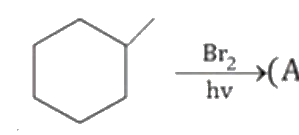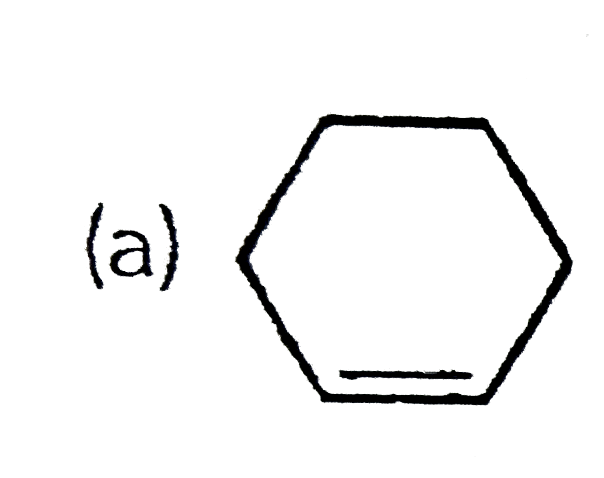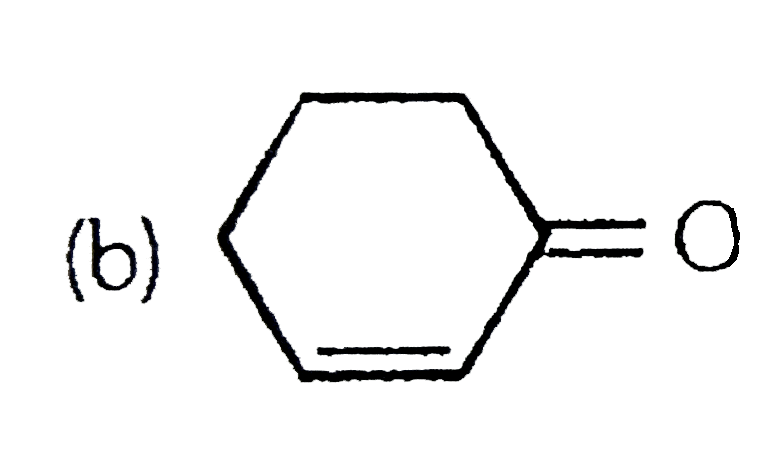Which of the statements are correct?
R−≡−R′Na+liq.NH3−−−−−−−−→+EtOH(A)Br2/CCl4−−−−−→B+C
where (B) and (C) are:
(a) Enantiomers if R≠R′.
(b) Diastereomers if R≠R′.
(c) Both are meso and hence the same compound if R=R′.
(d) An equimolar mixture of (B) and (C) is a racemic mixture
if R≠R′.
The correct Answer is:A, C, D
To solve the question regarding the reactions and the nature of the products B and C, we will analyze the given reactions step by step.
Step 1: Identify the Reactants
The reaction starts with an alkyne denoted as R≡R′. For our analysis, we can assume:
- R=CH3 (methyl group)
- R′=C2H5 (ethyl group)
Step 2: Reaction with Sodium in Liquid Ammonia
The first step involves the reaction of the alkyne with sodium (Na) in the presence of liquid ammonia (NH₃) and ethanol (EtOH). This reaction leads to the formation of a trans-alkene due to anti-addition:
- The product formed is A, which can be represented as:
C2H5−C(H)=C(H)−CH3
This structure has one ethyl group and one methyl group, along with a double bond.
Step 3: Bromination of the Alkene
Next, the alkene A undergoes bromination in the presence of Br2 and CCl4. This reaction also results in anti-addition:
- The bromination of A produces two products B and C:
- B and C will be enantiomers since they are formed from a chiral center created during the bromination.
Step 4: Analyze the Products
Since R and R′ are different (methyl and ethyl), the products B and C will be:
- Enantiomers (due to the presence of one chiral center).
- A racemic mixture (equal amounts of both enantiomers).
Step 5: Consider the Case When R=R′
Now, if we consider the case where both R and R′ are the same (e.g., both are methyl groups):
- The product A would be a trans-alkene with two identical groups.
- The bromination would yield a meso compound, which has a plane of symmetry.
Conclusion
Based on the analysis:
- When R≠R′, B and C are enantiomers and form a racemic mixture.
- When R=R′, the product is a meso compound.
Correct Statements
1. Statement A: Correct (B and C are enantiomers).
2. Statement C: Correct (B and C form a racemic mixture).
3. Statement D: Correct (when R = R', the product is a meso compound).
Final Answer
The correct statements are A, C, and D.
---
The reaction starts with an alkyne denoted as R≡R′. For our analysis, we can assume:
- R=CH3 (methyl group)
- R′=C2H5 (ethyl group)
The first step involves the reaction of the alkyne with sodium (Na) in the presence of liquid ammonia (NH₃) and ethanol (EtOH). This reaction leads to the formation of a trans-alkene due to anti-addition:
- The product formed is A, which can be represented as:
C2H5−C(H)=C(H)−CH3
This structure has one ethyl group and one methyl group, along with a double bond.
Next, the alkene A undergoes bromination in the presence of Br2 and CCl4. This reaction also results in anti-addition:
- The bromination of A produces two products B and C:
- B and C will be enantiomers since they are formed from a chiral center created during the bromination.
Since R and R′ are different (methyl and ethyl), the products B and C will be:
- Enantiomers (due to the presence of one chiral center).
- A racemic mixture (equal amounts of both enantiomers).
Now, if we consider the case where both R and R′ are the same (e.g., both are methyl groups):
- The product A would be a trans-alkene with two identical groups.
- The bromination would yield a meso compound, which has a plane of symmetry.
Based on the analysis:
- When R≠R′, B and C are enantiomers and form a racemic mixture.
- When R=R′, the product is a meso compound.
1. Statement A: Correct (B and C are enantiomers).
2. Statement C: Correct (B and C form a racemic mixture).
3. Statement D: Correct (when R = R', the product is a meso compound).
The correct statements are A, C, and D.
Topper's Solved these Questions
- ALKYNESBOOK - CENGAGE CHEMISTRY ENGLISHCHAPTER - ALKYNESEXERCISE - Exercises (Single Correct Answers Type)
30 Videos
- ALKYNESBOOK - CENGAGE CHEMISTRY ENGLISHCHAPTER - ALKYNESEXERCISE - Exercises (Archives - Single Correct Answer Type)
6 Videos
- ALKYNESBOOK - CENGAGE CHEMISTRY ENGLISHCHAPTER - ALKYNESEXERCISE - Exercises (Linked Comprehension Type)
51 Videos
- ALKENES AND ALKADIENESBOOK - CENGAGE CHEMISTRY ENGLISHCHAPTER - ALKENES AND ALKADIENESEXERCISE - Single correct Answer
14 Videos
- APPENDIX - INORGANIC VOLUME 1BOOK - CENGAGE CHEMISTRY ENGLISHCHAPTER - APPENDIX - INORGANIC VOLUME 1EXERCISE - chapter-7 Single correct answer
1 Videos
Similar Questions
Knowledge Check
In the reaction Me–C≡C−EtNa/lig.NH3−−−−−−−→PBr2−−→CCl4(Q), then Q is :
AA pure compound which is optically inactive due to internal compensationBA binary mixture which is optically inactive due to external compensationCA binary mixture which is optically activeDA pure compound which is optically inactive due to absence of chiral centre
 Br2−−→hv(A)alc. KOH−−−−→(B)OsO4−−→(C)HlO4−−→(D), Identify 'D'
Br2−−→hv(A)alc. KOH−−−−→(B)OsO4−−→(C)HlO4−−→(D), Identify 'D'
View SolutionCH3−O∣∣C−OHNH3−−→(P)Al2O3−−−→(Q)Br2/KOH−−−−−−→(R). R is
View SolutionPh−C≡C−PhNa/NH3−−−−−→AHCCl/H+−−−−−−→B
The product B is
View SolutionIdentify A to G in the following.
(a) Br2,CCl4−−−−−→AKCN−−→BH3O+−−−→C
Br2,CCl4−−−−−→AKCN−−→BH3O+−−−→C
(b) Br2,CCl4−−−−−→DKCN−−→EH3O+−−−→G
Br2,CCl4−−−−−→DKCN−−→EH3O+−−−→G
View Solution2H−≡−HCuCl−−−→NH4ClAH2+Ni2B−−−−−→BBr2−−−−−→(Major)C
The major amount of (C) is:
View SolutionThe product D of the reaction CH3ClKCN−−→(A)H2O−−→(B)NH3−−→(C)Δ−−→(D) is
View SolutionComplete the reaction
CH3−C≡C−CH3But-2-yneNa/liq.NH3−−−−−−−→H2?
View Solution

